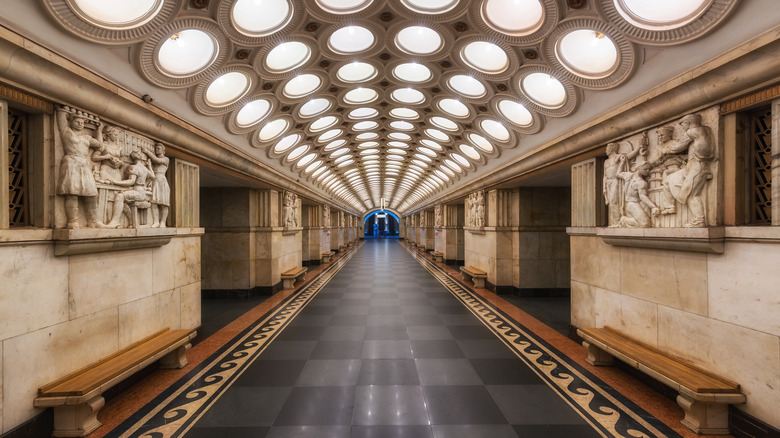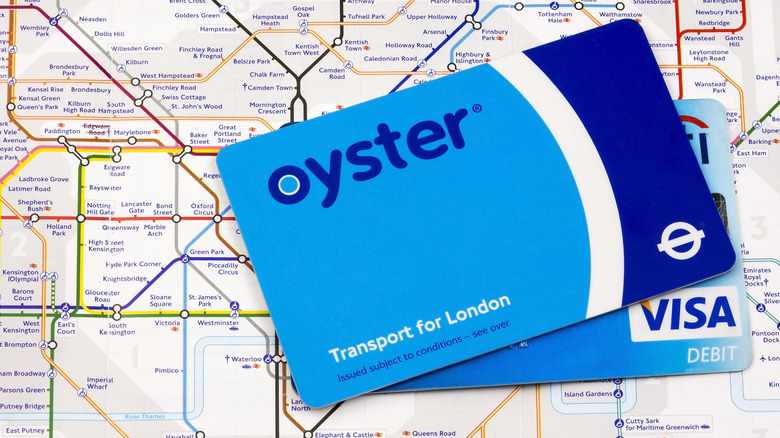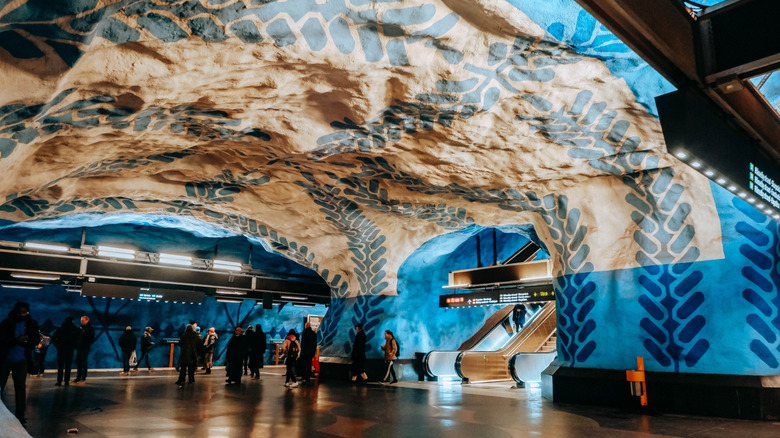The Best Transportation Method For Efficient Sightseeing In European Cities, Per Rick Steves
Arriving in a European city for the first time as a traveler can be a daunting prospect. Although travel expert Rick Steves has a tip to travel around European cities like a local, most metropolises feature somewhat chaotic narrow streets winding through ancient buildings, seemingly without a clear plan. Even once you've got your bearings, working out the best way to fit in the historical attractions and cultural sights to maximize your time in your destination can be tough. If you are exploring an unfamiliar European city, intelligent and purposeful sightseeing is key to tick everything off your list. While many tourists might be tempted to opt for private bus tours or group excursions, the most efficient transportation method for sightseeing in European cities is the humble subway system, according to Steves.
On his website, Steves says that "most of Europe's big cities are blessed with an excellent subway system, and wise travelers know that learning this network is key to efficient sightseeing." They tend to be clean, affordable, and regular and are almost always the quickest way to get around the city center, serving the main tourist spots and giving you the chance to cram more events into your day. Traveling by metro is also a way to see genuine, everyday life in European countries.
Understanding the subway map and planning your route
The first thing to remember about European subway systems is that the map doesn't always coincide exactly with the city's geography. Most European subway maps follow the diagrammatic concept and style first designed by Harry Beck for the London Underground in 1931. The colorful lines and clear, circuit-diagram design make it far easier to navigate the metro systems themselves, but these maps can be misleading about where the stations are in relation to other points aboveground. This means that while you can get a rough idea of where you need to go by looking just at the subway map, you will need to cross-reference it with a normal map of the city to ensure that you end up at the nearest station to your destination.
Route planning apps are a great way to make your sightseeing more efficient and help you get around. Rick Steves recommends apps like CityMapper, Google Maps, and Here WeGo, and many European metro systems have their own applications, as well. If you need to change trains at any point, follow the signs carefully, as transfers can be "a bewildering wander via a labyrinth of stairs and long passageways," according to Steves.
It is also worth doing a little research in advance about how you need to pay for your journey, as not every subway system does things the same way. For example, on the London Underground, almost all journeys are now paid for using a contactless card, which automatically calculates your fare and caps it at a certain point. Places like Paris and Rome still use paper tickets alongside prepaid cards. If you visit Luxembourg City, be prepared for a lovely surprise — all public transport is free.
Underground art galleries, historic carriages, and iconic European Metro stations
When Rick Steves describes Europe's subway systems as the most efficient way to sightsee, he is, of course, referring to them as modes of transportation. But the subway itself can also be a destination. Stockholm's Tunnelbana rapid transit system is often described as "the world's longest art gallery," as over 90 of its 100 stations have breathtaking, unusual works of public art. Plenty of tourists visit these metro stations for the sole purpose of seeing the art, rather than for the more prosaic, transport-related reasons.
The stations of the Moscow metro system are some of the most astoundingly beautiful architectural marvels the city has to offer. There is the soaring Soviet elegance of Arbatskaya, the detailed mosaics of Belorusskaya, the neoclassical vaulted ceilings of Komsomolskaya, and the futuristic layout of Mayakovskaya. As one of the shortest lines in Europe, Budapest's M1 metro makes up for its lack of grandiose design with quaint charm and vintage vibes. From its delightful wooden carriages to its Wes Anderson-style look and feel, the world's second-oldest underground railway is a large part of what makes Budapest such an underrated (and affordable) winter destination in Europe.


